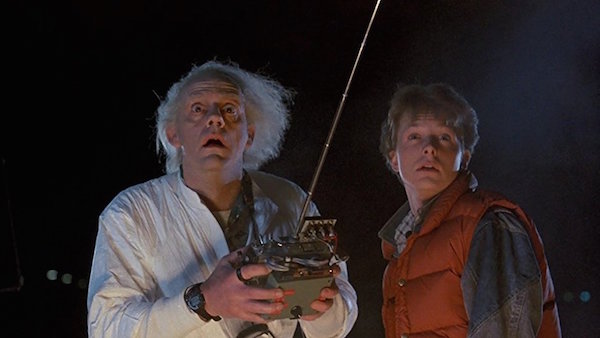The Sky is Falling! Literally!
Image via
This Friday, an asteroid is headed for earth. Seriously.
Armageddon it ain’t. Definitely not Deep Impact either. And no, we haven’t confused The Last Policeman with reality–the catastrophically ginormous Asteroid 2011GV1 that looms over Detective Hank Palace as he investigates a suspicious suicide is still pure (awesome) fiction.
But there’s still another rock out there, and it’s coming for us…kinda.
Asteroid 2012DA14 was discovered by scientists at the La Sagra observatory in Spain on February 23, 2012. At the time, they gave the 45-meter hunk of rock a 0.033% chance of landing on Earth, which works out to 1 in 3,030…which are pretty terrifying odds. Fortunately, though, the Earth has proven itself to be made of pretty tough stuff when it comes to surviving space rocks. As a planet, we’ve made it through a few near-Armageddons relatively unscathed, and all without Bruce Willis’s help.
Probably the world’s most notorious asteroid (this is why we can’t have dinosaurs!), the Chicxulub Event burst onto the scene about 66 million years ago. Scientists hypothesize that that’s when an impactor with an estimated 10km diameter plowed into Mexico’s Yucatan Peninsula and unleashed a host of awful side effects like megatsunamis, earthquakes, and volcanic eruptions. Physicist Walter Alvarez postulated that a similar impact caused the total wipeout of at the end of the Cretaceous period, which just so happens to align with the date of the Chicxulub impact. In a word: j’accuse! And though Chicxulub may have snuffed out the triceratops and velociraptor, plenty of mammals and amphibians made it through just fine.
Then there’s the Tunguska Event. On an otherwise calm morning in 1908, observers in a remote part of Siberia northwest of Lake Baikal reported seeing a column of blue light streak across the sky. Eyewitnesses didn’t have much time to wonder, however: not ten minutes later, a bright flash and massive shockwave rolled across the hills, breaking windows as far as hundreds of kilometers away. A poor understanding of meteoroids and the remote location of the impact proved the perfect recipe for weird theories of every stripe, from a tiny black hole to a failed experiment by Nikola Tesla to…aliens. But don’t send the History Channel just yet: most likely, it was just a dramatic, mid-air explosion of a meteoroid or comet.
Even more recently was 2008TC3. On October 6, 2008, Richard A. Kowalski at the Catalina Sky Survey north of Tucson, AZ discovered a meteoroid: 80 tons, 2 to 5 meters in diameter, and just 20 hours from impact on Earth. This lucky hunk of rock was the first to get the full treatment from the Spaceguard effort to track near-Earth objects (yes, this is a real thing), and scientists managed to get in 586 astrometric observations before the object ducked into Earth’s shadow in the wee hours of October 7. It exploded 36 miles above the Nubian Desert in Sudan at 5:46 local time, where (luckily) few people could see the massive fireball it caused. Over 600 fragments were later recovered, one of which now belongs to none other than Richard Kowalski himself.
Compared to those, 2012DA14 looks like nothing to fear, right? Good news, everyone: it’s not! Since its discovery, 2012DA14 has gotten a downgrade to the friendlier rating of -10 on the Palermo Technical Impact Hazard Scale and 0 (no hazard) on the Torino Scale. 2012DA14 will pass by Earth on February 15, 2013 (this Friday!) but it will be at a comfortable distance of 0.000228 AU (that’s 21,200 miles).
In other words: swing and a miss. No kaboom-y doom. And if you’re hoping for a romantic shooting star for post-Valentine’s Eve, you’re out of luck: 2012DA14 is too far away to hit the naked, Earthbound eye like the proverbial big pizza pie.
If you’re bummed at missing all the sweet astral action, don’t be dismayed: there’s still a 1 in 7,692,308,000 chance of 2012DA14 having a blast in the not-too-distant future…if you plan on being around on February 16, 2110, that is. And while you’re waiting, there’s always Armageddon.

Blair Thornburgh
BLAIR THORNBURGH is a graduate of the University of Chicago, where she earned a B.A. in medieval studies and delivered a pretty good commencement speech. She lives in Philadelphia.

